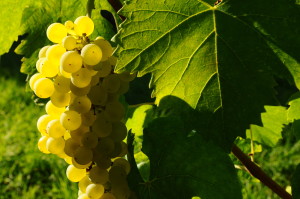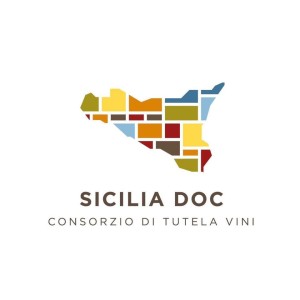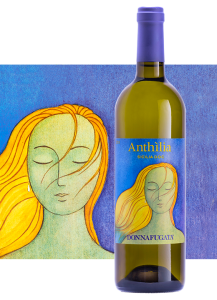
.
According to the website of the Consorzio di tutela vini Sicilia DOC, wines produced from the Cataratto Bianco Comune and Cataratto Bianco Lucido varieties may now be labeled using the term “Lucido.”
Lucido is a historical name for the Catarrato grape, and the Consorzio has taken this step due to the belief that the grape variety “Cataratto” is not widely known, and—particularly in the international markets—considered hard to pronounce. It is believed that these factors are making the wine less appealing to some consumers.
Catarrato is an ancient grape variety and native to the island of Sicily. According to Jancis Robinson, et al, in the book Wine Grapes, it was described as a Sicilian wine grape in 1696 by the Italian naturalist Francesco Cupani in the work “Hortus Catholicus.” Catarrato/Lucido is believed to be an offspring of the Garganega grape variety (which is itself best-known famous as the main grape variety of the Soave DOC). Garganega is also mentioned as the likely parent of Albana, Malvasia Bianca, and Trebbiano Toscano (among others)—giving the grape many possible siblings. Catarrato itself—along with Muscat of Alexandria—is believed to be the parent of Grillo, another important Sicilian variety.

Photo via: siciliadoc.wine/en/
Two “types” of Catarrato are often cited in wine documents (and wine labels): Cataratto Bianco Comune and Cataratto Bianco Lucido. Previously, it was assumed that these terms represented two distinct grape varieties, but recent evidence has shown that they are merely two clones of the same variety. According to Wine Grapes, it is proper to use the name “Catarrato Bianco” to refer to either clone. In this new ruling by the Consorzio of the Silcilia DOC, the name Lucido may apply to either clone.
Catarrato is the most widely grown grape on the island of Sicily, and despite its relative lack of acclaim, is the second-most-widely grown white grape in all of Italy. One reason for its relative obscurity is no doubt that a good deal of Catarrato grapes are used in wine destined for distillation, as grape concentrate, or in the production of sweet versions of Marsala. However, when grown in optimal conditions and used to produce a varietal or blended wine, it can be quite interesting. Well-done Catarrato-based wines tend to show aromas and flavors of citrus (lemon, tangerine, grapefruit), red apples, fresh herbs, almonds, and a distinct minerality. Such wines tend to be somewhat full-bodied and rich in floral aromas, often leading to a comparison with varietal wines produced from Viognier.

Photo via: www.donnafugata.it
One of the most widely-distributed Catarrato/Lucido-based wines I have found is Donnafugata Anthìlia Sicilia DOC. According to the winery website, “The 2018 vintage is characterized by a fresh and fragrant bouquet with fruity and floral notes. A very versatile wine, ideal with fish and vegetarian first and second courses.”
While Catarrato/Lucido is often used to produce a single-variety wine, it is also an excellent blending partner with other international and native Sicilian grapes. Typical blending partners for Catarrato/Lucido include Chardonnay, Grillo, Inzolia, Viogner, and Fiano.
In addition to the Sicilia DOC, the Catarrato grape is approved for use in the wines of many of the DOCs of Sicily, including the Alcama DOC, Etna DOC, Salaparuta DOC, and the Marsala DOC (among others). At this point, it is unclear whether or not the “Lucido” synonym will be used (or allowed to be used) outside of the Sicilia DOC.
References/for more information:
- Robinson, Jancis, Julia Harding and José Vouillamoz: Wine Grapes. New York, 2012: Harper Collins Publishers
- http://www.strettoweb.com/2018/12/vino-cataratto-sicilia-lucido-consorzio-doc/780918/?fbclid=IwAR2BviKh1iP8th7cLTUS5OmJtznjxwj0tGswShSV-CphFF5-SmabKieTEMQ
- https://en.wikipedia.org/wiki/Francesco_Cupani
- http://siciliadoc.wine/en/
- https://www.vinialsupermercato.it/consorzio-doc-sicilia-il-sinonimolucido-valido-per-le-due-varieta-di-catarratto/
- https://www.donnafugata.it/en/wines/anthilia/
Post authored by Jane A. Nickles, your blog administrator…
Hi Jane! Thanks for the great information! That would be a great trivia question: what is the second most planted white grape of Italy? I dare say, not too many learned wine geeks would get that right. Myself included, until now. As the self-appointed guardian of the proper use of the word varietal, I must commend you. You scored 100% correct! You are among the very few wine writers who use the proper form “single-variety” instead of the redundant and improper “single-varietal.” Well done!
Hi Kent! Thanks for the note and the kind words! I do try my best to use the correct language…and I agree that the variety/varietal divide (noun/adjective) is a struggle! Cheers!! Jane N.